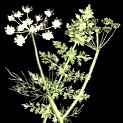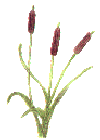|
**disclaimer: If any of the images belong to you and if you want credit or want them removed please email me**
MEANINGS & LEGENDS OF FLOWERS (C)

 Calendula
Calendula
Calendula officinalis
Family: Asteraceae
Common Names: ~Pot Marigold~ ~Summer's Bride~ ~Husbandman's Dial~ ~Mary's Gold~
Originating in Egypt, Calendula is a member of the marigold family and is valued for its medicinal and culinary properties. The word officinalis means ~medicinal~ and the Latin word ~calendae~ means ~throughout the months~ meaning that the ~plant flowers for many months.~
Calendula likes full sun but does poorly in hot weather. For centuries this plant was associated with the sun and believed to open with the sunrise and close with the sunset. Because the flower heads follow the paths of the sun (like sunflowers), the Calendula is sometimes called ~Summer's Bride~ or ~Husbandman's Dial.~
Early Christians called the Calendula ~Mary's Gold~ and placed them by the statues of the virgin Mary. Considered to be one of the most sacred herbs of ancient India, used in temples and weddings. The blossoms were strung into garlands and placed them around the necks of the gods.
Calendula has been used to treat ulcers and other illnesses. It also helps speed the healing of wounds and was used during the Civil War. The Romans used Calendula, mixed with vinegar, for seasoning meat and in salads and preserves. Eating Calendula was thought to make one see fairies, be easily induced to sleep, or to feel more amorous. The dried flower heads are used to flavor soups. The flowers served as the original dye in cheeses and for coloring butter.

 Calla Lily
Calla Lily
Zantedeschia spp.
Family: Araceae
Common Names: ~Calla Lily~ ~Trumpet Lily~
Calla Lilly a South African native is one of the oldest flowers known to man. It is said that as Eve left the Garden of Eden, lilies sprang from the earth where her tears of repentance fell. Throughout history, lilies have been a popular symbol in religion. Vase life for callas range between 5 - 7 days.

 Campanula
Campanula
Triodanis perfoliata
Family: Campanulaceae (Bellflower family)
Common Names: ~Venus's-looking-glass~
Known as Venus's-looking-glass, which comes from a legend in which the goddess of love lost her magic mirror, which reflected nothing but beauty. A poor shepherd boy found the mirror and kept it. When Venus sent Cupid to retrieve her looking glass, it fell to the ground and accidentally shattered. Everywhere a piece landed, a beautiful Campanula began to grow.
*See Venus's-looking-glass

 Candlenut
Candlenut
Aleurites moluccana
Family: Euphorbia
Hawaiian name: Kukui
The candlenut tree is native to Polynesia and South Seas Islands, Malaysia, the Malay Peninsula, and the Philippines. It can be found in the Gulf Coast of the United States.
This tree bears clusters of small, whitish flowers that are strung as lei, the symbol of the island Moloka`i. Leis made from polished kukui nuts are highly prized.
The ancient Polynesians brought this tree to the Hawaiian Islands where it has become naturalized. The dried nuts were cracked open and the seeds were skewered onto the midrib of a coconut frond and set on fire. The Polynesians used them for candles that burned for about 45 minutes. This is the reason for it's name ~candlenut tree.~
The nuts are smaller than walnuts and very oily. They are slightly poisonous when raw. However, safe to eat after they have been roasted. Oil from kukui nuts is used in varnish and paint oil, as a wood preservative, for soap making, waterproofing paper and insulating material. Native Hawaiians used the oil to light stone lamps. From the nuts, bark, and roots they produced a black dye for tattooing and painting war canoes. Canoes and fish net floats were made from the soft wood. Kukui trees also furnished a variety of medicines. All the parts of the kukui tree were used in the daily life of the Polynesian people. The candlenut tree, was adopted as Hawaii's state tree on May 1, 1959. The tree is a symbol of enlightenment.

 Caraway
Caraway
Carum carvi
Family: Umbelliferae
Caraway is indigenous to Europe and native to parts of Asia, India, and North Africa. Its properties were recognized by the ancient Egyptians and early Greeks and Romans. Popular in the Middle Ages and in Shakespeare's day, it was said to prevent lovers from straying and was a favorite ingredient in love potions.
It is said that using caraway, keeps off any prospective burglar when placed amongst your valued possessions. If the thief did manage to get in the house, the caraway would transfix the person until rescue arrived. For women worried about their husbands wandering off with other women, place some in the pocket and the man will never wander. Same principle applies to pigeons, add a little in their food and they'll never want to find another coop. Plant if you want to prevent someone from leaving.
Caraway has been cultivated for thousands of years. Seeds found in Mesopotamian are at least 5000 years old. Caraway seed cake is a tradition in England. Hungarian herdsmen used the seeds to flavor their goulash, Germans flavored pork with it, and the Swedish put the seeds in bread.

 Carnation
Carnation
Dianthus caryophyllus
Family: Caryophyllaceae
Common Names: ~Jove's Flower~ ~Pinks~ ~Gillies~ ~Gilliflower~ ~Sops-in-wine~
The name carnation comes from an old Italian word meaning ~complexion~ The earliest carnations bore flesh-coloured flowers, which gave rise to the name. Others say that it comes from the Greek word ~carnis~ meaning ~flesh~ also refering to the original color of the flower. Yet others state that Carnation comes from ~coronation~ or ~corone~meaning ~flower garlands~ as it was one of the flowers used in Greek ceremonial crowns. Scientifically the name comes from the Greek word ~Di~ meaning ~of Zeus~ and ~anthos~ meaning ~ a flower. ~ It was called Dianthus by the Greek botanist Theopharastus, meaning ~divine flower.~ Carnations are refered to as ~Pinks~ because the petal edges are serrated as though they have been cut with pinking shears.
Carnations were first discovered in the Far East. These flowers are widely mentioned throughout Roman mythology and appear in the natural history records of the Roman writer Pliny, back in 50 B.C. Cultivation of the carnation began in the late 13th century, by Roman monks. They were very important to the Greeks and Romans and became the symbol for the Romans at their peak in civilization. They were also known as ~Jove's flower~ in Rome because Jove was one of their most admired gods.
In ancient Greece they were the most adored flowers. According to a Christian legend, when Jesus was carrying the cross, Mary saw him and began to cry. Carnations began to grow where her tears fell.
According to superstition carnations could tell fortunes. In Korea, a cluster of three carnations were placed in a girls hair. Her fortune was told by the order in which the flowers died. If the bottom flower died first she would be miserable her entire life. However, if the top one died first her last years would be very difficult. Her earlier years in life would be hard if the middle flower died first.
It is a national symbol of Slovenia. In the16th century a red stylized carnation appeared as the Slovenian popular ornament. In the 19th century the Slovenians chose the carnation, as their most popular flower and it became ver significant and was used in embroidery, wood crafts, furniture, etc., always in red, combined with blue design. Among these, the cradle is one of the most typical works. It often has the Mary´s image or letters IHS with a carnation ornament. This sybolically means love to the child, a gift of God. The carnation pictures on a linenbox show the beauty and the richness of a bride's home. It appears also as a trimming on the girl's dresses, especially on their coifs and kerchiefs.
The red carnation represents charity and love. A corsage of flowers made up of carnation, rosemary and geraniums meant love, fidelity and hope. This corsage has been praised in Slovenian songs and used in popular customs. It was given to young men leaving for recruitment into the army, the girls fastened it on the boy´s breast.
In the countryside, especially in alpine areas, the carnation is found on window sills and balconies and ballustrades are full of carnation pots. The peasant house with carnation flowers is characteristic for the Slovenian land.
The scarlet carnation, the state flower of Ohio, had its beginnings in the city of Alliance. Dr. Levi L. Lamborn propagated French imported seedlings in 1866, naming the new flower Lamborn Red. The scarlet carnation was named the state flower of Ohio on February 3, 1904.
In 1867, Lamborn, a flower grower and politician, opposed William McKinley in the 18th Congressional District campaign. Despite their often heated discussions, at each debate Lamborn presented McKinley with a ~Lamborn Red~ boutonniere.
As McKinley became a political star, he spoke of the scarlet carnation as his good-luck flower. Later, when he became President, he wore one constantly, and at the White House, it was his custom to present each guest with a carnation from an ever-present bouquet on his desk. The carnation seemed to bring good fortune to President McKinley until September 14, 1901, when at the Pan American Exposition in Buffalo, NY, he took the boutonniere from his label and gave it to a young admirer. Moments later, he was killed by an assassin's bullet. The 12-year-old child who received McKinley's last scarlet carnation was Myrtle Ledger from Springbrook, NY. On April 8, 1959 the Ohio Legislature named Alliance the ~Carnation City~ the home of state flower.
The first mention of carnations was when the Crusaders were stricken with plague, in the 13th century, near Tunis. They mixed the leaves of carnations with wine and drank it to control the raging fevers. In his 16th century herbal, John Gerard wrote that the flowers of carnations and sugar, mixed to a conserve, was used to expel fevers and poison. Carnations were used for black hair dye and to flavor beer, ale, and wine.
According to an Italian legend, Margherita, a young woman fell in love with a knight whose name was Orlando. Margherita gave Orlando a white carnation, which he carried with him, when he was called to war. Orlando's blood stained the center of the white carnation when he was mortally wounded. The white carnation was returned to the heartbroken Margherita who planted the seeds. Every blossom that came from the seeds was white with crimson centers. Margherita remained true to Orlando forever and never married. It became a custom in Margherita's family to deliver to each baby girl born into the family, a vase of white carnations with crimson centers.
A mauve carnation with a blue tinge has been developed by Florigene in Australia
Carnation is is the flower of the month of January.
In 1907 a Pink Carnation became the symbol of Mother's love and was chosen as the emblem of Mother's Day.
In Canada you wear a red flower if your mother is still alive or a white flower if your mother has died. In Victorian language of flowers, the carnation is a good-luck gift to a woman.
This flower presses and dries well. The vase life of any Carnation is 14 - 20 days.

 Cat Tail
Cat Tail
Typha latifolia
Common names: ~Typha~
This marsh weed is a wild perennial plant that can be found in rice fields, swamps and marshes. It is a troublesome weed because it obstructs the flow of water and provides a breeding habitat for mosquitoes. It is also suspected to be poisonous to horses.
It has many uses: the roots contain starch and used to make flour. They are consumed by Europeans as an asparagus-like vegetable. The down has been used to dress wounds and as a filling for upholstery. During World War I, it was used to manufacture artificial silk. Even the small seeds have been harvested as a source of drying oil. The leaves are use in basketry.
On the Pacific Coast, the cat tail is often called ~Tule-reed.~ However, the Tule and Typha are different plants.
It is suitable for drying and the best method is freeze drying as the flowers retain their vibrant look for flower arranging. The flower won't shrivel or shrink as it may during other preservation processes.

 Celery
Celery
Apium graveolens L.
Family : Apiaceae
The ancient Greeks regarded celery so highly that they used it in the same way as laurel, making wreaths to decorate the heads of successful athletes.
Celery is a ~yang vegetable~ said to raisie a man's virility. Celery and the root form celeriac are well known as erotic stimulants. It is supposed to have Powers of Lust, Mental and Psychic Powers. Chewing the seeds will aid in concentration. Used in spell pillows to induce sleep. The stalk, along with the seeds, induces lust when eaten.

 Chaconia
Chaconia
Warszewiczia Coccinea
Family: Rubiaceae
Common Names: ~Pride of Trinidad and Tobago~ ~Wild Poinsettia~
Chaconia, the national flower of Trinidad and Tobago is a wild, forest flower. Coincidentally, this flower blooms on every anniversary of the country's Independence Day ~August 31, 1962~. The Chaconia represents the imperishability of life and the continuity of the nation.
The Chaconia owes its botanical name, ~Warszewiczia coccinea~ to the Polish-Lithuanian plant collector, Joseph Warszewicz. The title ~Chaconia~ was given to it in honour of the last Spanish Governor of Trinidad, Don Jose Maria Chacon 1784-1797

 Chamomile
Chamomile
Anthemis nobilis
Family: Compositae
Common Names: ~Ground Apple~ ~Roman Camomile~ ~Maythn~ ~Whig Plant~ ~English chamomile~ ~Perennial Chamomile~ ~Wild Chamomile~ ~Camomyle~ ~Chamaimelon~ ~ Maythen~ (Saxon) ~Heermannchen~ (German) ~Manzanilla~ (Spanish)
Native to Europe and the Mediterranean, the plant is aromatic, with a scent of apples, a characteristic noted by the Greeks, hence the name ~Ground-Apple~ ~kamai~ meaning ~on the ground~ and~ melon~ meaning ~an apple.~
Tea made from its flowers are medicinal and bitter. German chamomile, Matricaria recutita, is a gynecological herb, commonly used in the US. It produces a sweeter tea than Roman chamomile. In England, it was used as a strewing herb for its fresh fragrance. In Spain it was called ~Mananilla,~ signifying ~Little Apple~ and their sherry of this name is still flavoured with chamomile. An infusion of the flowers adds lustre to the hair. Dried flowers & leaves are added to pot pourri.
Dioscorides, a Greek physician in the Roman army, prescribed chamomile for upset stomachs, jangled nerves, and liver diseases. During the spring, ancient Greek physicians made lozenges out it's leaves, flowers, and roots, which were prescribed for snake bites.
It was used by the ancient Egyptians and the Moors. It is used in the treatment of numerous digestive complaints. The Egyptians reverenced it for its virtues, and from their belief in its power to cure ague, dedicated it to their gods. Its flowers were made into garlands worn by statues of deities in King Tut's tomb. Powdered chamomile flowers were sprinkled into the abdominal cavity of the mummy of Rameses II to act as an insecticide.
In ancient Assyria, Anthemis tinctoria, ~Dyer's chamomile~ was used for dyeing and was known as ~the gift of the field.~ The Anglo-Saxons, associated chamomile with the gods. Maythen was one of the Nine Sacred Herbs given to the world by the god Woden, as listed in the Lacnunga, an ancient Anglo-Saxon manuscript. 17th and 18th century herbalists say ~all parts of this excellent plant are full of virtue.~
It was called the ~Plant Doctor~ and planted near week plants. It is good for cabbages, and if planted a yard away, for onions as well. Sprinkle a light mulch of fresh or dried chamomile flowers at the base of the plant and water with hot water to treat plants suffering from transplant shock.
Chamomile is used to attract money, and a handwash of the infusion is sometimes used by gamblers to ensure winnings. The infusion is added to the bath to attract love. When Chamomile is sprinkled around the property, it removes curses and spells cast against you.

 Cherry Blossoms
Cherry Blossoms
Prunus spp.
Family: Rosaceae
Cherry blossom is the national flower of Japan, where it originated. The main characteristic of the cherry blossom is that when it falls, it does so at once. It symbolizes the militarism and Samurai spirit of the Japanese. There is no scent in cherry blossoms grown in Korea and the US. But, in Japan, people praise the scent of the cherry blossom and it is often spoken of in poems.
To honor its beauty, and short life span, the Japanese celebrate its arrival with a yearly festival. Friends gather under the trees to enjoy ~sake~ (rice wine), sing songs, and celebrate the coming of spring. It is used in wedding ceremonies because the Japanese love to enjoy the cherry blossom scent during happy occasions. Most events, such as an entrance ceremony or the starting of a company which relates with ~the start of life~ are held during ~the month of blooming cherry blossoms~ in April.
There is an expression that, ~A flower is a cherry blossom, a person is a Samurai.~ It means that when the Samurai faces danger, he is not afraid of death, because, like a cherry blossom, he will shrivel and fall at once, without hesitation. To the Japanese, this tree represents not only ascetic beauty, but also transience melancholy, and the honor of graceful resignation. Many references to the cherry blossom are found in Japanese poetry and literature. These trees have been offered by Japan as symbols of peace to the countries of the world. Cherry Blossoms now adorn the banks of the Potomac river, in Washington DC, and the remains of the Berlin wall.

 Chervil
Chervil
Anthriscus cerefolium
Family: Umbelliferae
Common Names: ~Garden Chervil~ ~Salad Chervil~ ~Gourmet Parsley~ ~French Parsley~ ~Myrrhis~
Chervil comes from the Greek ~to rejoice~ because of its delightful scent. One of the traditional herbs in French cuisine, chervil is valued for its parsley-like flavor and its volatile oil. During the Middle Ages it was used to treat various ailments. Originally a native of Southeast Europe and Asia Minor, it was spread by the Romans, who planted it near all its many camps in the Roman empire. In folk medicine, this herb is used to tone up the blood and nerves. It is used for mental depression and poor memory. The juice from the fresh herb is used to treat skin ailments.

 Chicory
Chicory
Cichorium intybus
Family: Compositae
Common Names: ~Wild Cherry~ ~Wild Succory
The name ~succory~ came from the Latin ~succurrere~ meaning to ~run under~ because of the depth to which the root penetrates. It is said to be a corruption of Chicory or Ctchorium, a word of Egyptian origin. The Arabian physicians called it ~Chicourey.~Intybus, is a modification of another Eastern name for the plant ~Hendibeh.~
Chicory was credited with great magical powers, including invisibility and if you want to open a locked chest chicory could help you but only on July 25 ~St. James's Day.~ By holding a gold knife and chicory leaves against the lock, the lock picker would be successful, but only if working in silence or death would soon be upon him if a word was spoken. Credited with removing obstacles, the early American settlers used to carry a piece of this with them for good luck.
Succory was known to the Romans and eaten by them as a vegetable or in salads. In Belgium, the young and tender roots are boiled and eaten with butter. Chicory is also cultivated for fodder.

 Chives
Chives
Allium schoenoprasum
Family: Amaryllidaceae
Common Names: ~Rush Leek~ ~Civet~ ~Sweth~
Belongs to the onion family, growing wild in northern Europe, Greece, and Italy. Ancient civilizations have been familiar with it. It was rumoured that chives ~send up hurtful vapors to the brain.~
Chives made their way into America before 1806. Dutch settlers in America planted chives in their cow pastures to create chive-flavored milk. Bunches of chives were hung in homes to ward off evil spirits. Thousands of years ago, Chinese herbalists recommended eating raw chives as an antidote for poison and to control excessive bleeding.
The Romans cooked with chives, which are mentioned in the cookbook of Apicius. Chives became popular in Europe, in the 16th century gardens. Leaves are used in salads and as a garnish. The French consider chives a necessity in fine herbs. In the Language of flowers it means, Why are you crying?

 Chrysanthemum
Chrysanthemum
Chrysanthemum morifolium
Family: Asteraceae
Common Names: ~Flower of Happiness~ ~Mums~
Chrysanthemums are native to Europe, Asia, and North America. The name chrysanthemum was first heard in England in the late 1500's. Englishmen had been calling the flower ~corn marigold~ but when they began importing flowers from the Far East, the name changed to that of the Oriental species which was called ~chrysanthemum.~ The chrysanthemum genus is made up of 150 species, including the common daisy.
Named by Carl Linnaeus, it means ~golden yellow flower.~ The name is derived from the Greek word meaning ~Gold Flower,~ ~chrysos~ meaning ~gold~ and ~anthos~ meaning ~flower.~
Confucius wrote about chrysanthamums in 500 B.C. Cultivated over 3,000 years ago by the Chinese, the Chrysanthemum is also known as the~Flower of the East~ and the ~Flower of Life.~ Tao Yanming was the first historical breeder in 400 A.D. After his death, his native city was named ~Juxian~ meaning ~City of Chrysanthemums.~
Chrysanthemums were the favorites of the Nobility in China, and common people were not allowed to grow them.
According to Chinese Feng Shui chrysanthemums bring happiness to your home.
The Asians consider it to be a sacred flower and the world's greatest chrysanthemum growers are the Japanese, who first got the flower from China at the end of the 4th century A.D. Three hundred years later, Japan's imperial emblem for ten centuries featured a golden chrysanthemum with sixteen petals.
A Japanese legend relates the story of the birth of the Empire of Japan. Twelve young maidens and twelve young men set out from China to find the ~herb of youth~ which they believed kept people eternally young. In order to trade for this herb, they carried with them baskets of chrysanthemums. When their ship wrecked near an uninhabited island, they swam ashore and planted the chrysanthemums. It was the first introduction of chrysanthemums to Japan. The imperial coat of arms of Japan shows a golden chrysanthemum with sixteen petals. It is carved on the throne of Japan's Emperor and in many Chinese artifacts. The greatest honour for a person, is to obtain the ~Order of the Chrysanthemum in Japan.~
According to a German legend, one cold, Christmas Eve in Germany's Black Forest, a peasant family was sitting down to a meager meal when they heard a wailing sound. When they opened the door and found a beggar who was blue with cold. They wrapped him in blankets and shared their food. Instantly, the blankets were shed, revealing a man in shining white clothes with a halo around his head. Proclaiming himself the Christ Child he left. The next morning, outside the door where he had stood, were two white chrysanthemums. Today, many Germans bring white chrysanthemums into their homes on Christmas Eve, believing that by doing so they are sheltering the Christ Child.
In China, chrysanthum petals are eaten in salads to increase longevity. The Chinese serve Chrysanthemum tea as a cure for headaches or depression. The Koreans boil the flower's roots to make a tea to cure vertigo.
It is the national flower of Japan. A special day in Japan, Chongyang, celebrated on 9th September, in its honour. People of Malta and Italy think it is unlucky to have the flower indoors. It is associated with funerals and All Saints Day .
Chrysanthemum Symbolises Optimism and Happiness
It is the Flower of November (Occidental)
It is the Flower of October (Chinese)
It is the Flower of September (Japanese)

 Cockscomb
Cockscomb
Celosia cristata
Family: Amaranthaceae
Celosia is a word from the Greek meaning ~burned~ describing the color of the flower. It is native to warm regions of Africa. Cockscomb tolerates dry, porous soils and likes full sun. It has large spikes, resembling a rooster's comb with colors of yellow, orange, pink, or gold. Blooming from midsummer to fall, the flowers last long and are used as cut or dried flowers, in borders, beds, and edging.

 Cinnamon
Cinnamon
Cinnamonum verum
Family: Lauraceae
Common Names: ~True Cinnamon~ ~Baker's Cinnamon~ ~Sweet Wood ~
One of the oldest known spices, cinnamon is mentioned in the Bible and in Sanskrit writings. Cinnamon is native to Sri Lanka and comes from the tropical evergreen laurel tree, Cinnamomum zeylanicum. The spice is the tree bark, rolled into sticks or ground to powder. Known as ~true cinnamon~ as opposed to Cassia Cinnamomum cassia which is commonly used as ~cinnamon~ in the United States.
Cinnamon oil was used as part of a holy anointing oil by the ancient Hebrews. To decorate ancient Roman temples, the leaves of the cinnamon tree were woven into wreaths and hung. The Egyptians used cinnamon oil during the mummification process. It is believed to have the powers for healing, love, lust, power, protection, spirituality, and success.
When cinnamon is burned as an incense, it raises high spiritual vibrations, aids in healing, draws money, stimulates psychic powers and produces protective vibrations. It is also used in sachets and infusions for these pruposes. Records in stone indicate that the Egyptian Pharoah Rameses III offered 246 bundles and 86 measures of cinnamon to the gods and goddesses on one occasion, and on another occasion 3,036 logs of the same rare spice. Cinnamon was also used in embalming. Medicinally, cinnamon has been used for thousands of years in the East for such complaints as colds, flu, digestive problems and as a general stimulant.
Cinnamon was also used by the Chinese to purify the temples and the Egyptians to make an area holy. Few cinnamon sticks tied over the door of your home are another good protective charm.
C continued onto next page....
|


Copyright © Pinkie D'Cruz 1998
Friday, January 16, 1998


|

